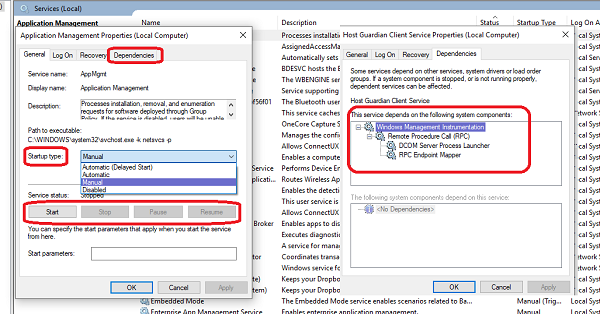Windows Services are applications that typically start when the computer is booted and run quietly in the background until it is shut down. Strictly speaking, a service is any Windows application implemented with the services API. However, services normally handle low-level tasks requiring minimal user interaction.

What are Windows Services
Windows Service, formerly known as NT services, is a long-running executable application on Windows OS. It runs in sessions, can start automatically with system boot, pause, and restart, and operates without a user interface, making it ideal for background tasks.
Windows Services are often invisible to users, but Windows cannot function normally without them. Services handle a number of essential operating system functions, including Networking, Hardware, and Remote access. They can be managed via the Windows Services Manager.
In addition to services that are part of Windows, most computers have several third-party applications that run partly or wholly as services. Common examples of third-party services include firewalls and antivirus applications.
Types of Windows Services startup
Windows 11/10 offers four start-ups types:
- Automatic
- Automatic (Delayed Start)
- Manual
- Disabled.
Read: What does Automatic (Trigger Start) and Manual (Trigger Start) mean for Windows Services?
This white paper from Microsoft provides an overview of the changes to the services model that were introduced beginning with Windows Vista and is also applicable to later versions of Windows. You can also learn more about svchost.exe here.
It covers the following topics:
- How Services Work
- Changes to the Windows Services
- Security Enhancements to Windows Services
- Running with Least Privilege
- Service Isolation
- Restricted Network Access0ry
- Session Isolation
- Performance Enhancements
- Delayed Auto-Start
- Service State Change Notifications
- Other Enhancements
- Preshutdown Notifications and Shutdown Ordering
- Failure Detection and Recovery
It also provides some best-practices guidelines for developers who intend to implement services for these versions of Windows.
You can download the whitepaper from Microsoft.
Incidentally, Microsoft has changed how Services are run by introducing a – Start on Demand startup type.
Read: How to restore missing or deleted Windows Service.
What are examples of Windows Services?
Examples of Windows Services include Windows Update, Windows Seach, Microsoft Exchange, Microsoft SQL Server, and Windows Time. These services run in the background and start automatically with the operating system, ensuring essential functions are performed without user interaction.
What are services used for in Windows?
Windows Services run long-term background processes that start automatically upon system boot. They provide essential functionality without user interaction, making them ideal for servers where uninterrupted operations are crucial.
Leave a Reply